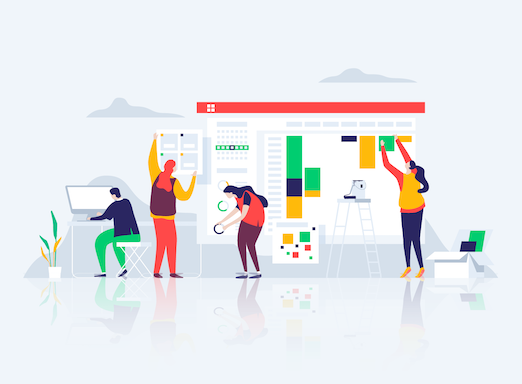New Dashboard for Stacks, Widgets, and Field Configurations

Since the beginning, Contentstack’s objective has been to help enterprises transform and simplify the way they manage their digital assets.
To that end, we have been releasing powerful and unique features on a near-weekly basis. Last week, we introduced several new features that will aid every member of your team, business and IT users alike.
Here’s a rundown of what’s new.
Dashboard for Stacks
Your stacks just got a brand new Dashboard.
Dashboard is a collection of widgets that are independent powerhouses, enabling you and your team to work better and faster.
The best part about the new Dashboard is that it is fully customizable. In a single, central location, you now can show or hide whichever widgets you’d like, and you can even add new widgets to your stack right from the Dashboard.
The default widgets that Contentstack provides are ‘Recently Modified Entries’ and ‘Recently Modified Assets.’ You can add new widgets through our new type of Experience Extensions called ‘Dashboard Widgets’ (more on this below).
The Dashboard replaces the Content page as the default homepage of the stack. We are introducing the Dashboard to provide users with a console where they can get a quick overview of their stack, navigate to important pages, access widgets, and so much more, all from a centralized location.
Read our documentation to learn more about the new Dashboard.
Dashboard Widgets - A New Type of Extension
We are glad to introduce yet another type of Experience Extension — Dashboard Widget. The Dashboard Widget lets you add any custom widget to your stack Dashboard.
Developers can use this powerful extension to add a plethora of tools to their Dashboard.
For example, you can create widgets that allow your stack’s users to view information about stack usage, add personal notes, and see a summary of other Contentstack components (total assets, users, roles, etc.). You can also use your Dashboard to display information from third-party apps, such as analytics, RSS feeds, and news, and add external functionalities, such as a text translator, keyword generator, and more. With Contentstack Dashboard Widgets, the possibilities are endless.
We have created a step-by-step guide that explains how to create these widgets. Read through the guide and get started with the all-new Dashboard Widgets.
Instance-level Configuration for Custom Fields
Previously, if you had defined a configuration for a custom field, the configuration applied to all instances of that custom field. While this is still possible, you now also can define a different configuration for each instance of that custom field.
For instance, if, while creating the Color Picker custom field, you define in the config parameter that the default color is blue, you can change the default color each time you add the Color Picker custom field in the content type.
Read more about instance-level configuration for custom fields.
About Contentstack
The Contentstack team comprises highly skilled professionals specializing in product marketing, customer acquisition and retention, and digital marketing strategy. With extensive experience holding senior positions at renowned technology companies across Fortune 500, mid-size, and start-up sectors, our team offers impactful solutions based on diverse backgrounds and extensive industry knowledge.
Contentstack is on a mission to deliver the world’s best digital experiences through a fusion of cutting-edge content management, customer data, personalization, and AI technology. Iconic brands, such as AirFrance KLM, ASICS, Burberry, Mattel, Mitsubishi, and Walmart, depend on the platform to rise above the noise in today's crowded digital markets and gain their competitive edge.
In January 2025, Contentstack proudly secured its first-ever position as a Visionary in the 2025 Gartner® Magic Quadrant™ for Digital Experience Platforms (DXP). Further solidifying its prominent standing, Contentstack was recognized as a Leader in the Forrester Research, Inc. March 2025 report, “The Forrester Wave™: Content Management Systems (CMS), Q1 2025.” Contentstack was the only pure headless provider named as a Leader in the report, which evaluated 13 top CMS providers on 19 criteria for current offering and strategy.
Follow Contentstack on LinkedIn.






.svg?format=pjpg&auto=webp)
.svg?format=pjpg&auto=webp)
.png?format=pjpg&auto=webp)






.png?format=pjpg&auto=webp)


